Iceland is one of the most visually spectacular countries I’ve ever been to.
From the breathtaking landscapes to the welcoming locals, the wonders of this country were obvious from my first cold steps on Icelandic terrain.
During my time spent traveling in the Land of Fire and Ice, I gazed in awe at waterfalls streaming from towering mountains, explored a volcanic crater-turned-lake, stood mere steps away from an active geyser, skipped over black sand beaches, and crunched my way across turquoise glaciers.
But today, we’re here to talk about the prices.
Iceland has a reputation for being expensive — one of the most expensive countries in Europe, in fact — and things have only grown worse since the pandemic. Most shockingly of all, accommodation that I stayed at a year ago has now doubled in price[!]. It really is quite shocking.
But you know what? This is the case for practically every single major tourism destination right now, in Europe and further afield. Prices everywhere are skyrocketing, but there are still some ways that you can keep your costs down.
I’m going to be sharing all of those with you today.
The most expensive time of year is mid-June through to August, so you can expect prices to double again during these summer months.
Once you leave Reykjavik, however, you’ll find prices on food and accommodation dip to a more comfortable level. And with free activities scattered all over the island, there’s plenty of ways to keep your costs even lower.
So how much does it cost to travel in Island? In this article, I’m going to be sharing exactly how much you can expect to spend in 2024. Note that I’ve mentioned all prices in USD, since there are more visitors to Iceland from the United States each year than anywhere else.
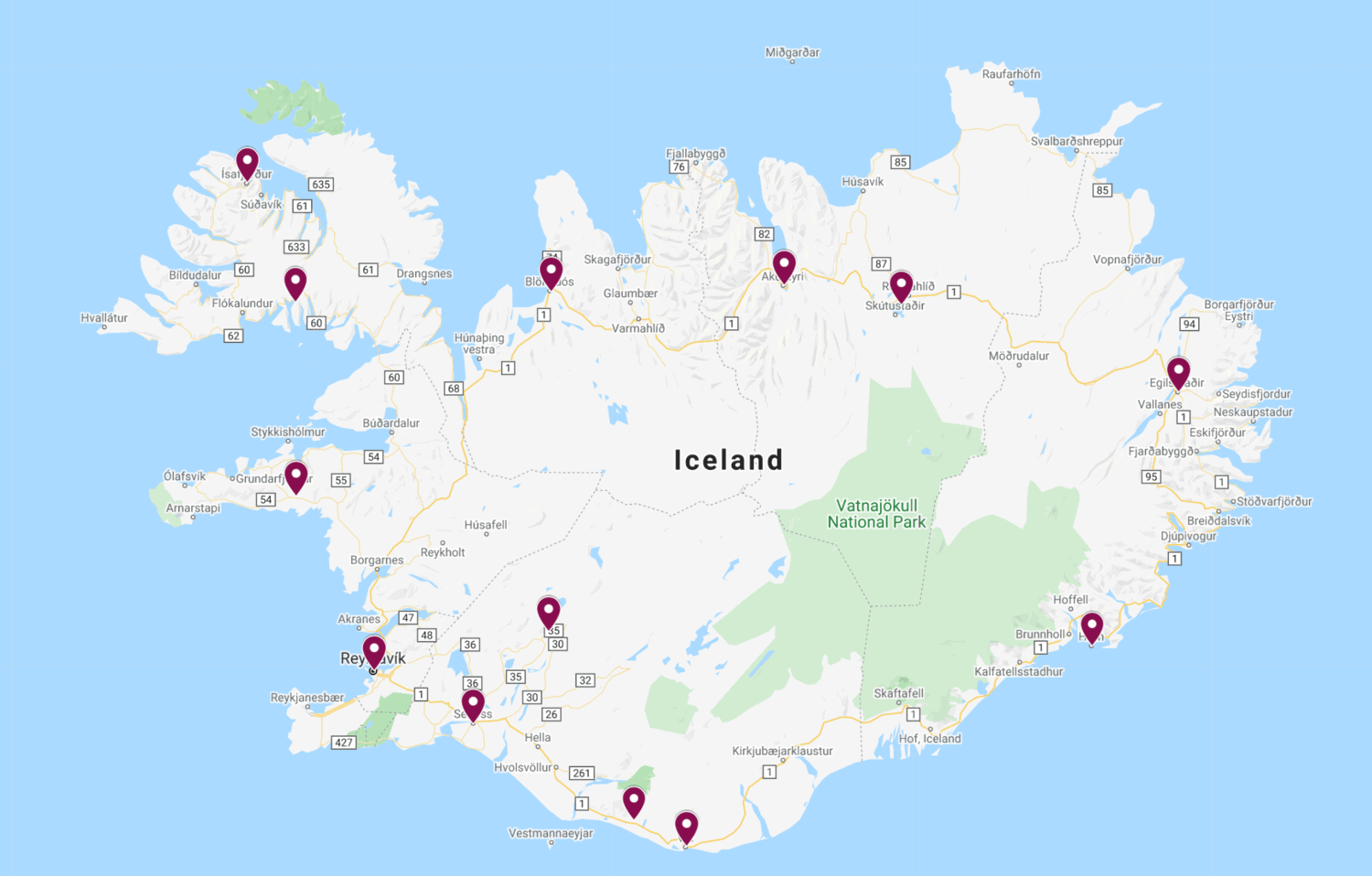
The Ultimate Iceland Itinerary
Before I start diving into the nitty-gritty details of costs, I want to first go over where I visited in Iceland and how you can spend two weeks seeing the most epic parts of the country.
Iceland, fortunately, is one of the easiest countries to plan a road trip in. Why? Well, there’s essentially only one road!
That is, of course, an exaggeration, but the Ring Road of Iceland is the main road in the country and it encircles the entire island. Taking a road trip, then, is all about circling your way around the country and choosing the most epic spots. Here’s what I recommend, taking a counter-clockwise route from Reykjavik:
Day One: Reykjavik
Day Two: Selfoss
Day Three: Vík
Day Four: Höfn
Day Five: Egilsstaðir
Day Six: Mývatn
Day Seven: Mývatn
Day Eight: Akureyri
Day Nine: Sauðárkrókur
Day 10: Ísafjörður
Day 11: Staðarhólskirkja
Day 12: Midhraun
Day 13: Reykjavik
Day 14: Reykjavik
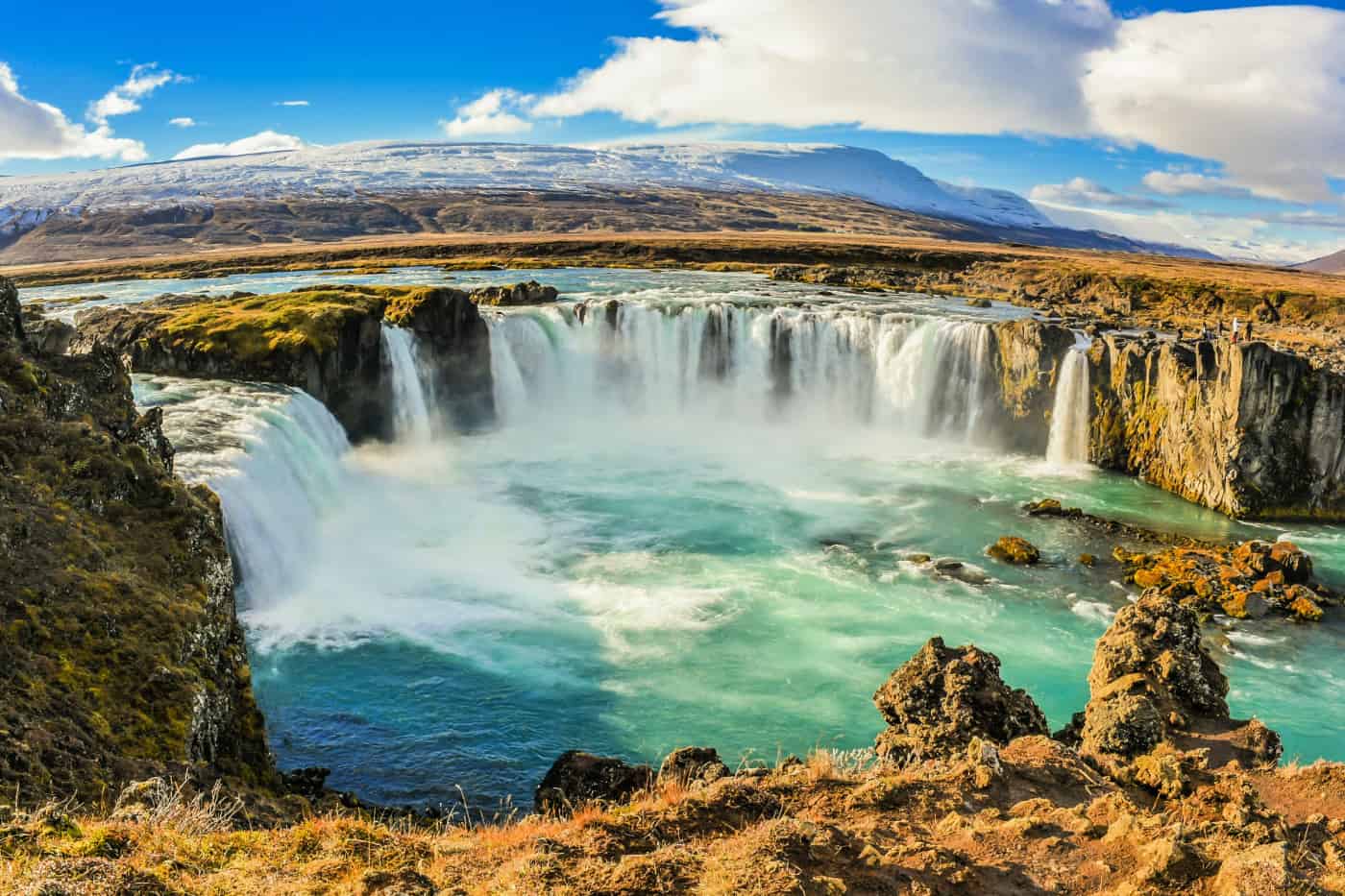
How to Save Money on the Cost of Accommodation in Iceland
As always with travel, it’s possible to cut your accommodation costs down to zero if you have the time and patience to seek out an offer.
Housesitting is a great option for free accommodation. This is where you’ll take care of somebody’s house while they’re away, and usually look after their pets, too. It’s best for long-term travellers or retirees as you can’t pick and choose dates and destinations, so you need to have a lot of flexibility as to where you go and at what time of year. If you do have that freedom, it’s a wonderful way to cut down your travel expenses, soak up some home comforts, and live like a local for a while. I have friends who have housesat in castles before! For free! Trusted Housesitters is the best site for getting started with housesitting, as they have the highest number of listings.
I’m suspecting, though, that for most of you, you’re not interested in the free accommodation and just want somewhere clean, safe, and affordable to rest your head each night. If that’s the case, there are several options available for you.
The first of these are hostels. In Iceland, you’ll come across hostels dotted all over the country, although most of them are unsurprisingly in Reykjavik. They’re one of your best options for saving money as a solo traveller.
Hostels in Iceland are on a par with the rest of Northern Europe, and you can expect to spend around $40 a night for a dorm bed for a well-reviewed hostel in Iceland, with the price increasing to about $60 a night for the absolute best of the best.
When it comes to private rooms in hostels, you can expect to spend around $150 a night for a clean, basic room in a good location, so if you’re travelling with friends or with your partner, it doesn’t always cost a lot more to grab some privacy over settling for two beds in a dorm room. $200 a night will get you an exceptionally well-reviewed private room in a hostel.
I use HostelWorld to find the cheapest hostels, as they tend to have the greatest number of listings at the lowest prices.
But what about the hotels? That’s what most of you are interested in learning about anyway!
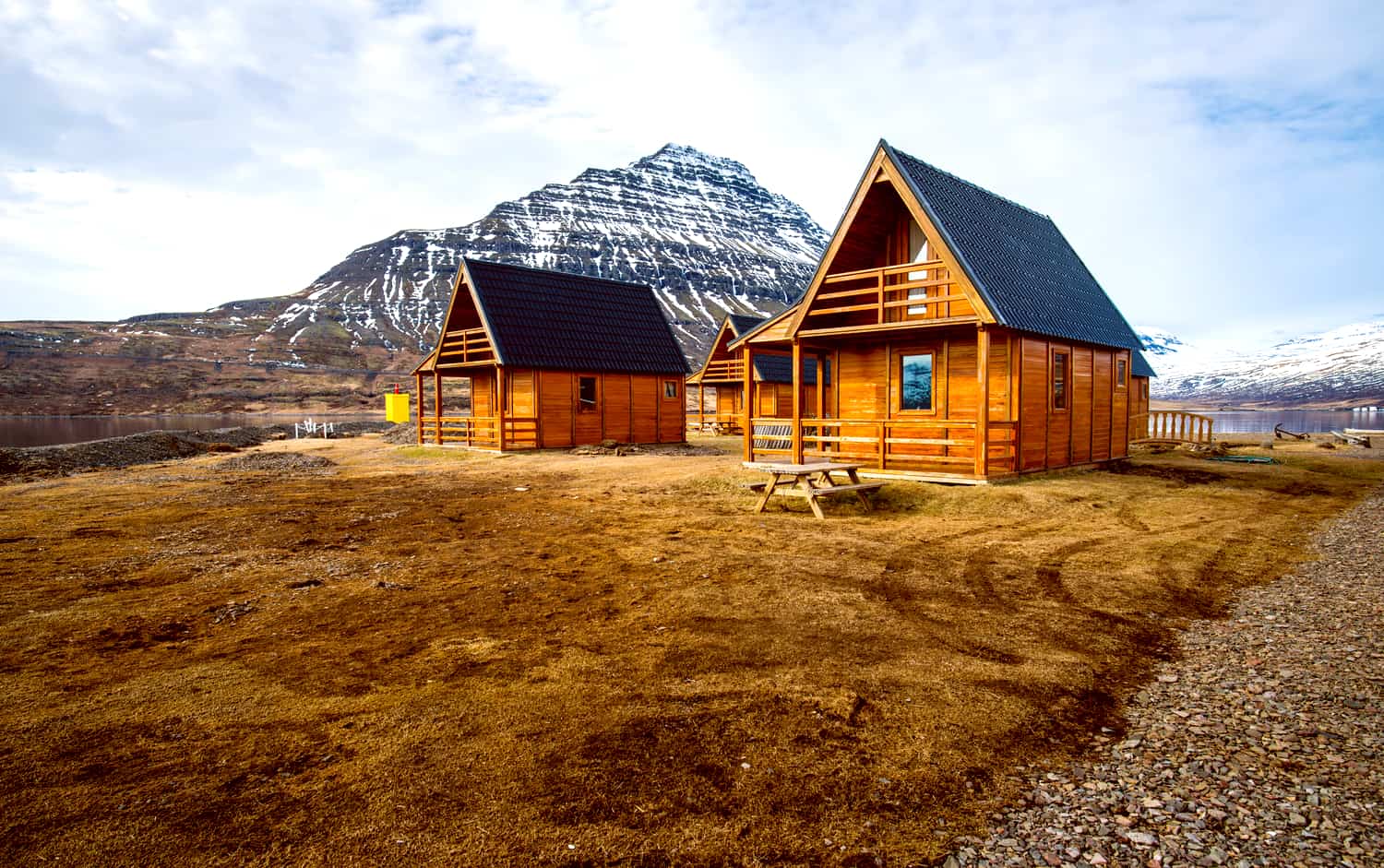
The Cost of Accommodation in Iceland
If you’re travelling as a couple and were getting worried by the cost of private rooms in hostels that I talked about earlier, I’ve got some good news for you. There’s much more competition when it comes to hotels, so they can often be cheaper and nicer than their hostel equivalents.
In this section, I always like to share my favourite accommodation for a destination: where I chose to stay, how much I paid for it, and what I thought about the property. Here’s my choices for Iceland:
Reykjavik: Freyja Guesthouse ($145 per night for a deluxe double room)
Not only is this guesthouse one of the highest-rated properties in Reykjavik on Booking, but it’s also one of the most affordable options, too. And I loved this place. It’s in the perfect location for exploring Reykjavik, right around the corner from the iconic Hallgrímskirkja church. The rooms are clean and cozy, and I especially liked the little kitchenette that let me save a bit of money on breakfast and drinks. It’s run by the most incredible family, and there are even free bikes for guests to use at any time. This place offers exceptional value for money in Iceland!
🇮🇸 Don’t forget to check out my post on the 19 Best Things to Do in Reykjavik!
Selfoss: Ásahraun Guesthouse ($127 per night for a, um, barrel)
Now, I don’t know about you, but whenever I come across the opportunity to sleep in an unusual style of accommodation, I always leap at the chance. Life is too boring to spend every night in a hotel, right? … Right? So that’s what brought me to Ásahraun Guesthouse, where you can stay in a, um, barrel. Yes, you read that correctly. But in all seriousness, it’s such a cool spot and way, way nicer than you’re expecting. It receives a remarkable score of 9.5 on Booking, and that’s all due to the incredible setup. For your money you get to stay in the cosiest barrel-style room with its own fridge and kettle, have access to a hot tub (if you’re lucky you might spot the Northern Lights from it), and be fully immersed in the incredible natural surroundings. There’s a high-quality shared kitchen to prepare meals if you’d like to, and the owners are absolutely lovely and fully committed to helping you have the best stay ever. I wouldn’t be surprised if this ended up being the accommodation highlight of your time in Iceland.
Vík: Guesthouse Galleri Vík ($287 per night for a double room)
This is such a wonderful place to stop for the night, and we were so glad we chose to do so. It’s cosy, comfortable, and clean, with a welcoming owner who makes amazing homemade waffle dough and jam: there’s a waffle iron in the room so you can put it all together for a delicious breakfast. The guesthouse itself is in a great location in Vik, right in the centre of town and within walking distance to that beautiful black-sand beach.
Höfn: Old Airline Guesthouse ($133 per night for a double room)
Now, I’m not going to say that my favourite thing about this guesthouse is the fact that it had a washing machine and dryer, but I will tell you that it was very much appreciated after several days of road-tripping! The accommodation itself is right in the heart of Höfn, close to all of the best restaurants (I recommend Pakkhús for dinner; it’s the best restaurant in town!) as well as a supermarket and petrol station. The room was clean, spacious, and bright, and the hosts couldn’t have been nicer. All in all, this was a really good (and affordable) place to stay for a night on our road trip!
Egilsstaðir: Hotel 1001 Nott ($284 per night for a double room)
This was one of priciest places we chose for our road trip but the beautiful location and epic views from the room made it more than worth it. You’re nestled in between the mountains and the lake here, with hot tubs to take a dip in (I recommend doing so at sunset) and even a waterfall to stroll to. A delicious breakfast is included in the price: for other meals, you can either eat onsite or drive 5km back down the road to Egilsstaðir. I’d definitely suggest having dinner at the hotel at least once, though: the food there is absolutely delicious (reindeer burgers for dinner, anyone?) This would be a particularly wonderful option if you’re in Iceland on a romantic getaway.
Mývatn: Vogafjós Farm Resort ($251 per night for a double room)
Mývatn doesn’t have much in the way of accommodation, and most of what it does have doesn’t receive the greatest reviews. This property stands out from the crowd, then, and we loved loved staying there! You’ve got cosy wooden log cabins to sleep in, helpful staff who can help you make the most of your time in the area, and you’re just 10 minutes from the local thermal pools. Throw in an excellent restaurant in a cowshed a three-minute walk away that’s run by the same family (breakfast there is included), and you’ve got yourself an excellent stay in Mývatn.
Akureyri: Hafdals Hotel ($233 a night for a twin room)
This hotel is just outside of Akureyri — a five-minute drive to the centre — but it’s worth staying a little way out of town because it lands you with some spectacular views instead. You’ll be looking over the city, gazing out at the fjords, and admiring the river while you stay here, in a clean and modern hotel, with a lovely owner, and a delicious breakfast. This is a great place to base yourselves while day-tripping around the north of Iceland, too.
Sauðárkrókur: Karuna Guesthouse ($113 a night for a twin room)
We considered staying in Blönduós for this night, but the accommodation was so poorly-rated there, that we decided to opt for Sauðárkrókur instead. And what a great idea! This guesthouse felt like a steal — it was one of the cheapest places we stayed in Iceland, but it didn’t feel like it: we had the best sleep of our trip in those comfortable beds (plus blackout curtains — always appreciated!), and the owner was absolutely wonderful. The free food she left out for breakfast was so appreciated (freshly baked bread!), and the views across the fjords were magnificent. All in all, a great place to stay.
Ísafjörður: Tangs ($260 a night for a 4-person apartment)
If you plan on venturing into the Westfjords, this is the place to stay! It’s an apartment, rather than a hotel, and located in the centre of town within walking distance to everything. The place is clean, spacious, and stylishly-decorated, and even offers free bicycles for guests to use. And trust me — as somebody who has stayed in over 100 Airbnb apartments over my years of travel — this apartment has one of the best-equipped kitchens I’ve ever come across. Oh, and having a washing machine and dryer were a huge bonus after many days on the road!
Staðarhólskirkja: Miðjanes Reykhólahrepp ($90 a night for a double room)
This cosy guesthouse and working farm (wait until you taste the fresh milk from the cows!) was such a lovely place, with beautiful views over the ocean — great for sitting in the living room and bird-watching. You’ve got access to a communal kitchen and living room, which resulted in so many new friendships, and the owner has tons of useful advice on where to go and what to do. It’s a little isolated, so soak up those peaceful vibes, because you’ll be heading back to Reykjavik in just a couple of days!
Midhraun: Lava Resort ($176 per night for a double room)
This is the cutest collection of cottages ever! You’ll be staying in beautiful surrounds in an adorable cottage, with plenty of nearby trails to wander along while you’re here — I recommend the one that takes you out on to a nearby lava field. The cottages have plenty of amenities with fully-equipped kitchens, plenty of storage space, and a laundry room to get any washing done. It’s perfect location for exploring everything the peninsula has to offer!
My average cost for accommodation in Iceland was $189 a day between two people.
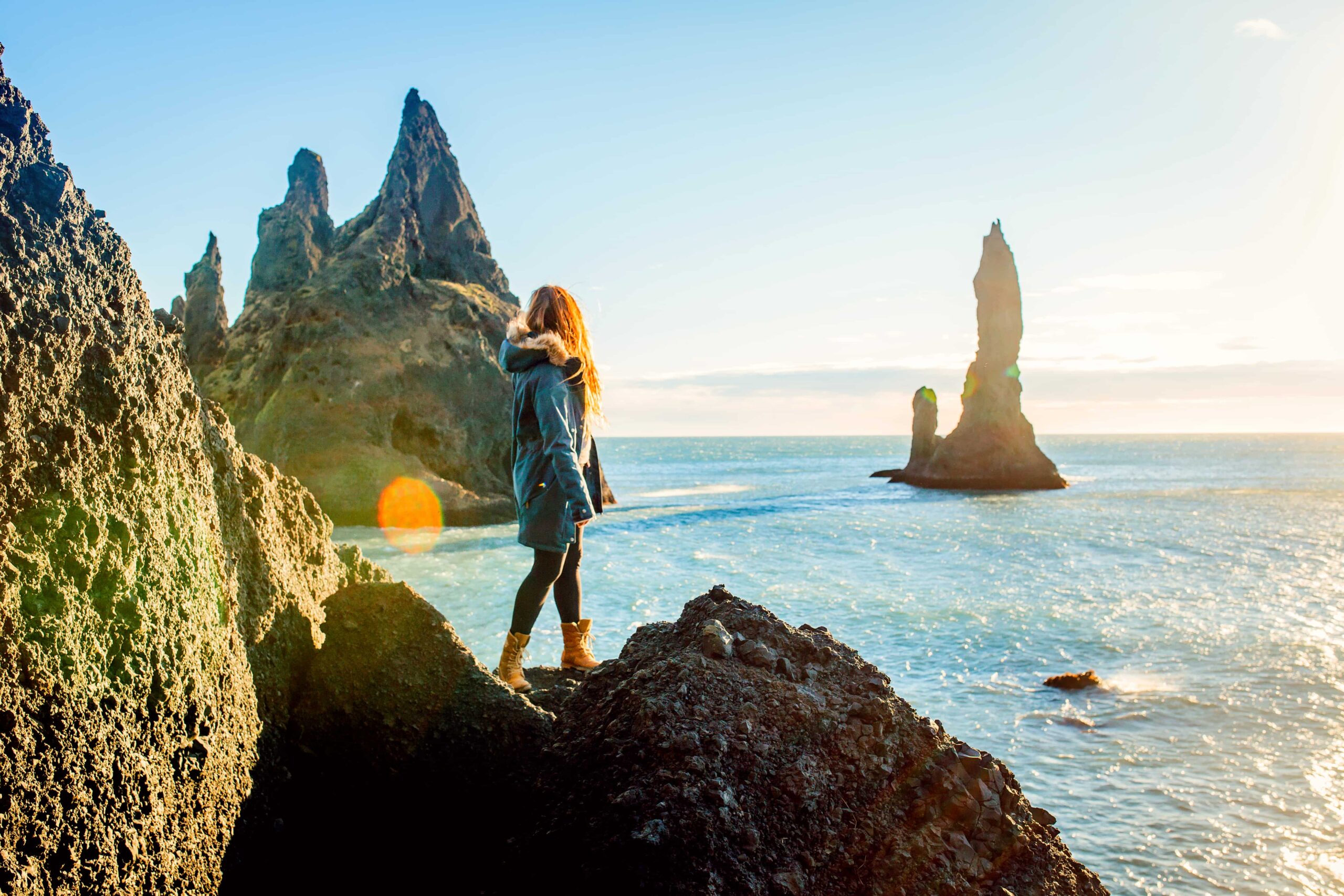
The Cost of Transportation in Iceland
Let’s talk first about the costs involved in getting to Iceland. For all of my North Americans and Europeans out there, you’ll most likely be pleasantly surprised by the prices.
When you check flight prices on Skyscanner, you’ll be greeted by a wall of IcelandAir flights. And the great news about that is that IcelandAir offers free stopovers in Iceland whenever you opt to fly between Europe and North America. I utilised this when flying from Washington D.C. to London several years ago and it was epic. I was able to stop in Iceland for three days on my way over at no additional cost, so I used that time to explore the Golden Circle.
If you’re planning a trip to Iceland itself, know that you’ll be looking at around $400 for return flights from the east coast of the U.S. to Reykjavik.
If you’re in Europe, flights are inexpensive. From London, you’ll be looking at around £70 return. For other major flight hubs within the continent, such as Paris, Madrid, Milan, and Berlin, flights will usually be around €150 return — not too bad at all!
Don’t forget to have a quick check of Secret Flying before you book your flights either — there may be a bargain up for grabs that coincides with your travel dates!
But what about transportation within Iceland?
Iceland is made for road-tripping. If you’re planning on spending a week or two within the country, it’s the absolute best way to get around. Renting a car within the country is inexpensive and navigating is easy — you simply follow the iconic Ring Road around its 1,300 kilometres — or 828 miles — until you end up back in Reykjavik. The roads are well-paved and there’s hardly any traffic, which makes for an incredibly easy road trip.
I used RentalCars to find my car in Iceland; they check prices across all of the major hire companies to surface the cheapest options out there. Within Iceland, you can expect to pay between $38 and $52 a day for a rental, which really isn’t too bad at all. If you’re not having any success with RentalCars, take a look at the Iceland-based Northbound, as you can sometimes pick up a deal through there.
Self-drive tours are popular within Iceland, although I don’t personally believe they’re necessary — it’s so easy to drive around Iceland on your own!
With these self-drive tours, you essentially pay for somebody to put together an itinerary, get you a rental car, book your accommodation for you, and even provide you with breakfasts. But there’s plenty of itineraries available online for free (I shared mine in the previous section!), it’s easy to find your own rental car online, and it’s better to head out to local restaurants to try the breakfasts anyway. Icelandic Nordic Visitor has dozens of self-drive itineraries to sign up for — as an example, a 7-day self-guided tour starts from $1586 per person.
If you’re considering a self-drive tour, I’d urge you to save your money and use it on nicer accommodation.
If you can’t drive, or don’t want to, there are buses and tours that can help you see the country without needing your own set of wheels. Straeto gives some great bus routes for traveling in and around the capital city, but public transport in general is hit and miss outside Reykjavik: there isn’t a lot of it, and it doesn’t necessarily go where or when you want it to. Here are some typical prices for transport in Iceland:
- Flight from Reykjavik to Akureyri: $66
- Flight from Reykjavik to Seydisfjordur (EGS): $96
- Single bus ticket in Reykjavik: $4.50
- Bus from Reykjavik to Stykkisholmur: $38
- Strætó Bus app fare per month: $76
- 3-day bus pass in the Reykjavik area: $41
- 1-day bus pass in the Reykjavik area: $18
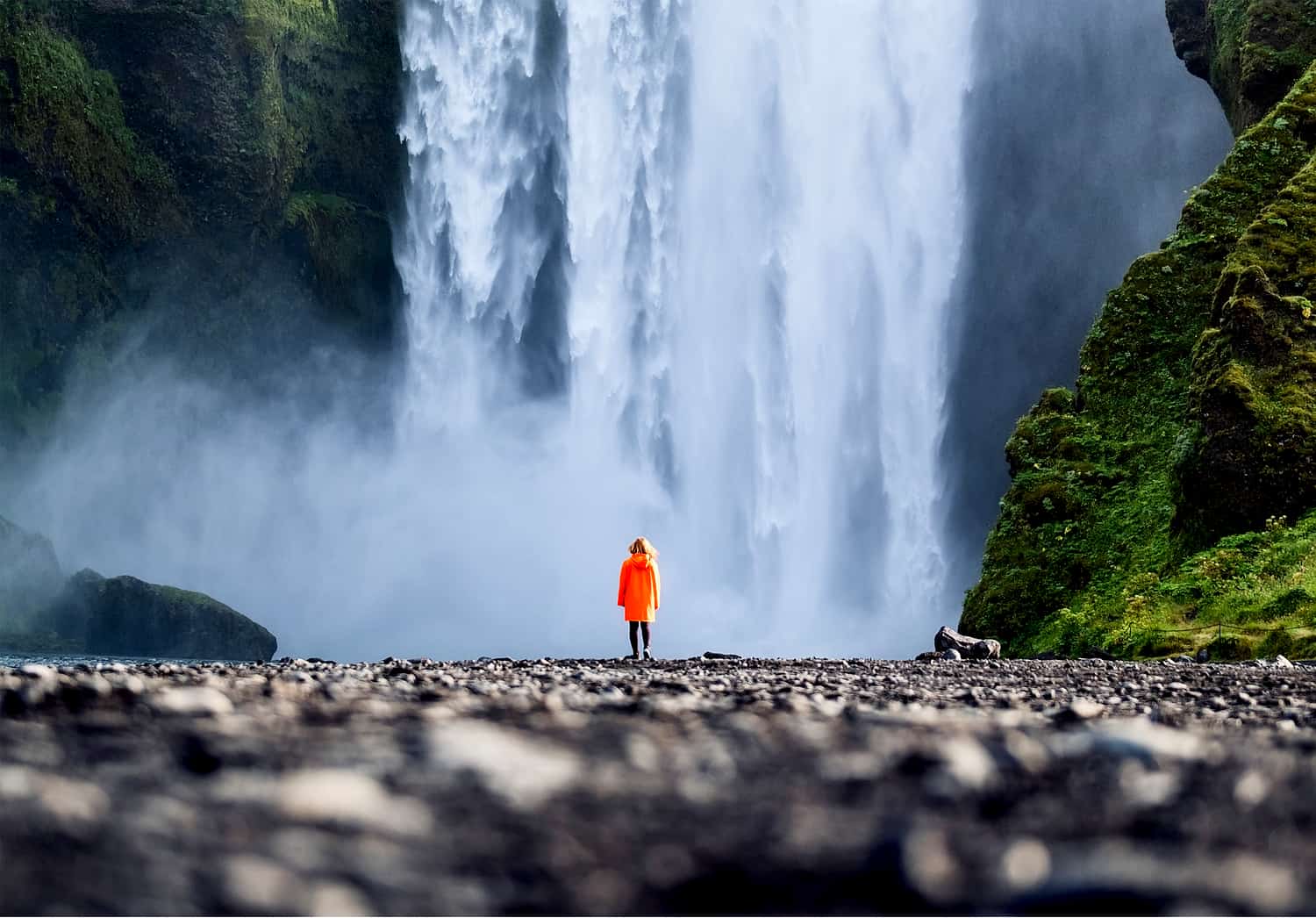
The Cost of Food in Iceland
We all must eat and thank goodness for that because both the traditional and contemporary cuisine in Iceland is top notch. I know, I know — Iceland doesn’t have the best reputation for cuisine, with rumours abounding of fermented shark and smoked puffin, but dig a little deeper and you’ll find plenty of treats.
First and foremost, you can’t leave the country without eating a hot dog. That’s right, a hot dog. This popular street food has made a tasty name for itself in Iceland and you’ll find them everywhere. It’s a dish that’s cheap, good, and easy to find, from basic street cart varieties to fancy or vegan versions in restaurants all over the country.
Prices vary, but expect to pay somewhere between two and four dollars. Start by heading to Bæjarins Beztu Pylsu, a hot dog stand that by now has achieved near-legendary status in Reykjavik, so that you know what a good one is meant to taste like!
Moving on from the street food options, if you plan to eat out, breakfast will be your cheapest meal. Budget around $10-25, depending on how hungry you are. Expect to pay around the following prices:
- Coffee: $3 for filter, $4-5 for latte/cappuccino
- Croissant:$4
- Skyr (thick, tangy yoghurt) and granola: $7
- Hafragrautur (Icelandic oatmeal): $10
- Salmon/bacon, potato, and scrambled eggs: $21
Lunch tends to be a relatively light affair in Iceland; think soups, salads, and sandwiches rather than large, heavy meals. Expect to pay somewhere between $15 and $25, based on where you are in the country and whether you’re still full from breakfast! Some typical options include:
- Soup is a common lunch meal, although the type you’ll see on menus changes with the season. Expect lamb or thick, chowder-like fish and potato during the colder months, and tomato or a lighter fish soup during summer. $17
- Open-faced sandwiches on rye bread with salmon, ham, cheese, or hummus and vegetables: $14
- Chicken or fish salad: $19
Alternatively, you’ll find a few restaurants offering a lunch buffet with a range of options for a set price: this is a good way of trying different Icelandic dishes, and is a good way of saving money, since it’s cheaper than eating out at dinner time. Having a larger meal for lunch and something small for dinner might not be traditional, but it is cheaper, especially outside weekends! You’ll pay around $25-40 per person for this.
Dinnertime will likely be your most hefty splurge, where you can expect to spend anywhere from $25 to $50 or more for a meal and a drink.
Reykjavik Fish Restaurant is a great spot to get a feel for Icelandic fare with their standard fish and chips dish costing $22, and several other tasty seafood options on the menu.
Reykjavik’s Islenski Barinn, or the Icelandic Bar, is where you’ll want to go to if you’re craving a local vibe with traditional Icelandic eats. Yes, it’s a bar but no, you won’t find your typical boring bar food. From puffin on crumpet to lamb and salmon hotdogs to shark bits and reindeer burgers, you can expect a more upscale and unusual pub experience. Prices aren’t too bad, however, at around $15 for smaller dishes and $25-35 for larger ones.
When it’s time to treat yourself, find Von Mathús in HafnarfjordurIf. The best thing about Von Mathús is you get to soak up the classy, contemporary setup and splurge on the delectable food, without the wild prices of fine dining. The menu isn’t large, but it’s well thought out and delicious. A 3-course set menu costs $76, or you can pick and choose from the a la carte offerings instead. When it comes to drinks, be sure to check out the happy hour offerings; they run practically all day (11:30 am to 2 pm/4 to 8 pm)!
Speaking of happy hour, it’s kind of a thing in the capital. Loft Hostel is very popular thanks to the rooftop terrace that yanks locals and visitors in from the street, begging them to sit and sip for a while. They have beer deals from 4 to 8 pm daily.
Veður Bar & Café is a classy establishment that loves sharing their discounted beverages. So much in fact their “happy hours” stay happier longer. Beer and wine is discounted every day from 2:00 to 7:35 pm (yes, they are precise on their cut-off time), starting at $6.50, a bargain by Icelandic standards! There’s also a cocktail “hour” from 7 to 9 pm that pulls in the patrons, with drinks from $16. You should also know, Thursdays are a special day at the Vedur: that’s when bubbly flows for only $7.50.
Of course, if you opt to not drink, it will definitely lower your costs. Alcohol isn’t cheap in Iceland, especially if you are buying it a full price in a pub. Your best option for a tipple is to load up at the grocery store, where local beers cost around $4 for a 500ml can, imported beers run a dollar or two more, and the average midrange bottle of wine goes for approximately $20.
If you have access to a kitchenette in your hostel or hotel, then buying food at the supermarket is the cheapest overall option. Groceries are comparable to what you might spend in the U.S. — here are a few examples:
- a gallon of milk: $6.50
- a pound of chicken fillets: $10
- a dozen eggs: $6
- a load of bread: $3.50
- a pound of cheese: $9
Whenever possible, shop at Bonus: there are over 30 of them around the country, they’re easy to find (being bright yellow), and they offer the best discounts on food.
The average price for eating out in Iceland is $79 a day
The average cost of food when cooking simply at home in Iceland is $18 a day
The average cost of food when combining both eating out and cooking is $51 a day
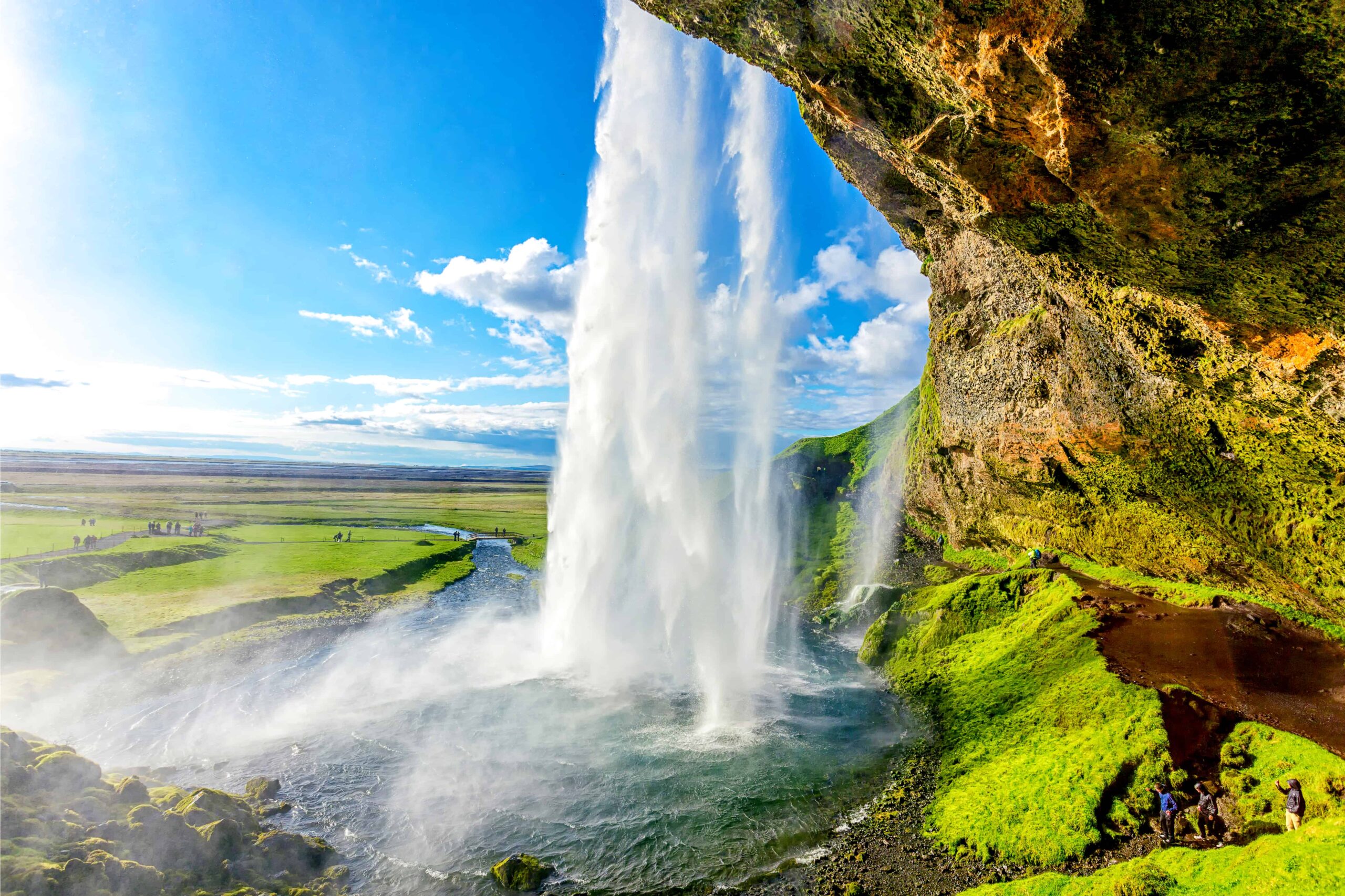
The Cost of Activities in Iceland
Iceland is Mother Nature’s playground. It feels like there’s almost no limit to the outdoor activities and sightseeing on offer in this geographic wonderland. That, on top of the nightlife, daytime biking adventures, and a strong gastronomic scene, make it very easy to keep busy.
The first thing you’ll want to do when you arrive is head to the Blue Lagoon. One of the biggest tourist attractions in the country, it’s absolutely worth taking a dip in the milky-blue waters, but expect to share the experience with many others. It’s popular for a reason!
We opted for the $148 package that includes a silica mud mask, free drink (we chose champagne!), and towel. If you’re not into commercial tourist activities, fear not: solitude and free hot springs aren’t hard to find as long as you’re up for the adventure.
Reykjadalur Hot Springs requires an hour-long hike to get to but once you arrive you have a whole river to soak in. Grotta Lighthouse Footbath is in Reykjavik and is easy to access but note the word “foot” in the name: it’s not very deep, but it is unique!
There’s a wide range of day trips available to visitors from Reykjavik through Get Your Guide for those of you who are short on time. They’re great options if you’re taking that three-day layover between the US and Europe that I mentioned earlier: some of the best day tours include:
- a south coast day trip, where you walk behind a waterfall, walk on the black sand beaches of the southern coast, visit the southernmost village in the country, and check out the Sólheimajökull glacier: $101
- going lava tunnel caving, where you take a guided tour through the Raufarhólshellir lava tubes that were formed after a volcanic eruption over 5000 years ago: $108
- a Golden Circle day trip that takes in the best waterfalls, lakes and geysers in the southwest of the island, and includes seeing where the North American and Eurasian tectonic plates meet: $74
- a small-group trip to the Snæfellsness Peninsula, visiting the Berserkjahraun lava fields, Snaefellsjokull volcano, and Kirkjufell mountain along the way, not to mention a delightful seal colony: $146
- An ice cave day trip, where you get to hike across Myrdalsjokull glacier (crampons provided!) and walk inside the incredible ice caves of Kötlujökull glacier: $204
One of the most memorable moments from our trip was hiking the Sólheimajökull Glacier, where we were able to rappel down crevasses and drink the most delicious 400-year-old water.
Biking is also a fun way to sightsee in the capital, at least when the weather is good. If you’re feeling more adventurous, you can book a tour to navigate other parts of the country on two wheels as well. Reykjavik Bike Tours offer guided day trips to the Golden Circle, Coast of Reykjavik and Westman Isles, to name a few. Prices for bike rentals start at $29 while guided tours vary depending on location.
Driving the rural roads of Iceland is one of the best ways to see and feel the essence of the country. Beginning in Reykjavik, the Golden Circle is a 190-mile loop that offers a wealth of natural beauty. Big ol’ blocks of ice, more commonly referred to as glaciers, black sand beaches with natural ice sculptures the size of me, funky moss, and tiny elf houses line the route around the circle. There’s something remarkable to see around almost every corner.
The great thing about the Land of Fire and Ice is the best things are often free. Exploring the more remote parts of the island and soaking up the natural beauty is the best way to experience the country on a budget, whether that’s by car, bicycle or foot. Even walking out of your hostel can be a beautiful experience with the right vantage point!
And, of course, there’s the Northern Lights.
I can’t write an article on Iceland and not highlight the lights! We went in late September with the goal of seeing that incredible night sky. That’s quite early for the lights to appear, so it was a bit of a gamble, but a gamble we won. Soaking in our hot tub, we were able to gaze up in awe at the illuminated fluorescent swishes dancing above us. It was a moment I’ll never forget.
If you can, book your trip during the months of September to March and hunt down those lights. You won’t regret it!
The average cost of activities in Iceland is $29 per day

The Cost of Travel Insurance in Iceland
I’m all about ensuring that every single one of my readers understands the importance of travel insurance. When you work in the travel industry, as I do, you’re inundated with news of destitute backpackers on GoFundMe who fell ill while travelling, didn’t have travel insurance, and now can’t afford the hundreds of thousands of dollars needed to be airlifted home for medical care. It happened to an old school friend of mine just last year. In short, if you can’t afford travel insurance, you can’t afford to travel.
Travel insurance will cover you if your flight is cancelled and you need to book a new one, if your luggage gets lost and you need to replace your belongings, if you suddenly get struck down by appendicitis and have to be hospitalised, or discover a family member has died while you’re overseas and need to get home immediately. If you fall seriously ill, your insurance will cover the costs to fly you home to receive medical treatment.
I use SafetyWing as my travel insurance provider, and recommend them for trips to Iceland. They’re one of the few companies out there who will actually cover you if you contract COVID-19. On top of that, they provide worldwide coverage, don’t require you to have a return ticket, and even allow you to buy coverage after you’ve left home. Finally, they have a clear, easy-to-understand pricing structure, which is always appreciated. A two-week trip to Iceland costs $21 with SafetyWing.
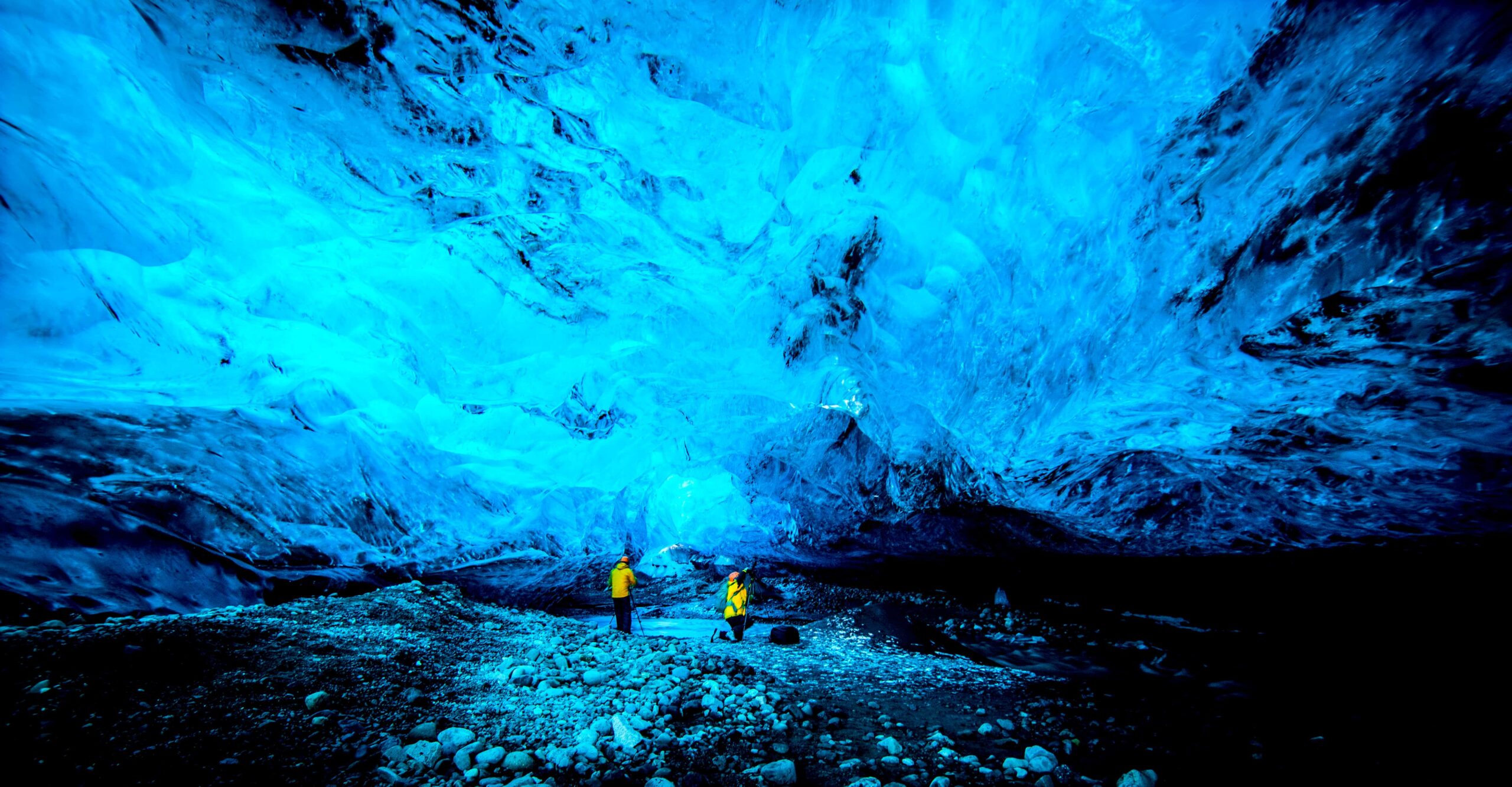
How Much Does it Cost to Travel in Iceland?
So how much can you expect to spend on an incredible trip to Iceland? At the end of these budget breakdowns, I always like to pore over my receipts, tally up my every expense, and tell you guys exactly how much my travel adventures cost.
A two-week long road-trip in Iceland, during which I was travelling on a mid-range budget as part of a couple and moving almost every day, came to the following:
- Accommodation: $189 per day for two people ($94.50 each)
- Transportation: $46 per day for two people ($23 each)
- Food: $51 per day
- Activities: $29 per day
Total amount spent per day: $197.50 each
Sure, it’s not the cheapest vacation option out there, but I promise you: Iceland is so, so worth the money! It really is one of the most remarkable places I’ve ever been.
So what do you think? Is Iceland more or less expensive than you expected? Have the prices put you off or made you all the more determined to get over there? And, as always, let me know if you have any questions and I’ll reply to them all in the comments below!
Further Reading
- Best Things to Do in Reykjavik: Don’t forget to check out my in-depth guide to all the best things to do in Iceland’s capital!
- 22 Mind-Blowing Things to Do in Iceland: All of my favourite things to do in Iceland!
- How Much Does it Cost to Travel?: If you enjoyed this budget breakdown, I’ve got a whole lot more to share with you! I’ve been recording my travel expenses for 13 years and counting, and have published over 70 detailed expense reports on my site.
- How to Find Cheap Flights Around the World: My biggest and best tips and tricks for scoring a great deal on flights.







Great photographs of Iceland! The waterfalls are amazing. $41 dollars a day is completely reasonable if not downright cheap. Thanks for laying of the expenses so clearly.
This post is so helpful! Money is always something I’m worried about when traveling.
Thanks for this post it was super useful in planning our trip to Iceland! Your pictures are so inspiring too!
Thanks for this useful guide! Planning my two week road trip to Iceland now that I’m fully vaxxed and can’t wait to see some of these beautiful landscapes with my own eyes. Your article helped so much with my trip planning.
I guess prices must have shot up since you went there. I was just pricing rental cars and for the cheapest car I could find, it was over $4500 for 12 days. The self-guided tours that included budget accommodation and a cheap car were a bit cheaper, but were $5000 for 2 people for 12 days.
What dates are you looking for, Brett? I’m happy to have a look and see what I can do. I’m seeing prices of $700 for a 12 day hire for September, for example.